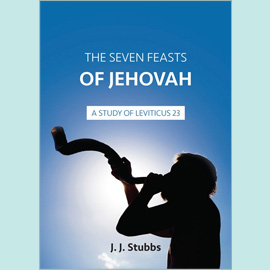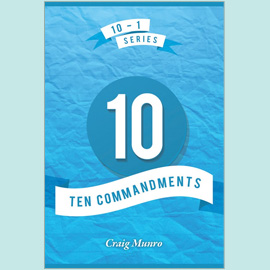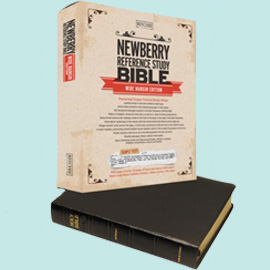Dear John,
In my last letter I outlined some of the things you need to know when reading Biblical poetry. Now it is time to examine a specific poem. Since (as I said before) the great Old Testament foreview of Calvary in Isaiah 53 is in reality a magnificent Hebrew poem, it can be treated as a specimen for analysis. Analysis can often be stimulated by asking a series of questions. I advise my students to approach any piece of literature with the aid of the following headings: subject (what is it about?), structure (what design features can you notice?), setting (what are its locations?), speakers (whose are the voices we hear?), society (who are its major people?), story (does it have a plot?), and style (what linguistic features do you see?). My students tell me that my alliteration gets rather stretched around point number five, but at least the words stick in the mind. Of course, you will not need to use them all on every occasion, but they form a handy check list.
But let us first place our poem in its context. The second great division of Isaiah’s prophecy (chs.40-66) is dominated by what people often call the "Servant Songs", that is, pieces of poetry which describe a wonderful person who is able do God’s will on earth without fail. Now, although Isaiah himself (20.3), and Israel as a nation (43.10; 44.1) are at times referred to as the Lord’s servants, the ultimate servant of Jehovah is the Lord Jesus. Nor do we have to take this on trust. When in Acts 8.32-35 Philip gave the Ethiopian eunuch an inspired exegesis of Isaiah 53 he made it plain that the prophet was speaking not about himself but about "Jesus". Philip did not even say, "the Messiah", or "Christ" (which might have allowed for the possibility that Isaiah was referring to someone who was still to come), but unambiguously identified Isaiah’s servant with the man who had so recently been rejected and crucified by Israel. In other words, the passage is about the historical Jesus of Nazareth. The earlier Servant Songs describe (i) the moral character of Jehovah’s perfect Servant (Is 42.1-6), (ii) His commission (Is 49.1-13) and (iii) His confidence in God (Is 50.4-9). Go through them to see how they paint pen portraits of the Saviour. The fourth and final song (Is 52.13-53.12) is the most memorable of all, outlining His career and triumphant sacrificial death.
Having read the passage slowly, repeatedly, and carefully we can now use our seven headings. First, what is the subject? Well, it is emphatically spelled out right at the start in the words "Behold, my servant" (52.13), as God immediately directs our attention to the most important person in the universe. Indeed, in this sense the poem is a miniature of the whole Bible, for in the final analysis all God’s Word is about God’s Son (Lk 24.44). The astronomer who famously said that he was simply thinking God’s thoughts after Him can stand for all believers, in that we today merely seek to enter into God’s thoughts about His beloved Son. Where God has first spoken who can say anything new? That is why the breaking of bread meeting consists of returning to God what He has first given us. While our worship can never be original it should always be Scriptural.
Second, the structure is broadly circular in that we move from "my servant" (52.13) to "my righteous servant" (53.11). The Lord Jesus fills the poem from start to finish. You will notice that in between two great mountain peaks of splendour, the exalted servant elevated to glory (52.13) and the satisfied servant delighted by the results of His labours (53.11), there is a valley of suffering which graphically pictures His humiliation and atoning death. This ABA structure (where A represents glory and B suffering) is also seen in condensed form in the prologue section 52.13-15. It is in fact the design pattern of redemption throughout the Scriptures. Read Philippians 2.6-11 (and John 16.28) to see how the Saviour moves from glory down to suffering and back to glory. The whole song therefore sets up a powerful contrast between God’s view of Christ (52.13) and that of unregenerate Israel (53.4). In each case there is a triad of epithets: in the first He is "exalted and extolled, and…very high"; in the second He is "stricken, smitten of God, and afflicted". The world in general is still blind to the real identity of the Lord Jesus. How wonderful to know that our view of Him conforms to God’s solely because in sovereign grace He has opened our eyes (Eph 1.18)!
Third, we should observe the settings of the poem. We first encounter a scene of universal acknowledgement where "many nations" and "kings" do obeisance to Christ (52.15). This anticipates both the present period of Gentile blessing (as Paul quotes it in Romans 15.21) as well as the time of future global submission to the Lord Jesus at His glorious return to planet earth (Phil 2.10-11). But alongside this vast prophetic scene of worldwide worship is the local setting of Israel’s spiritual condition when Christ first came: "a dry ground" of empty barrenness (53.2). Despite all her privileges, there was nothing in Israel to delight God’s heart – yet from that wasteland sprang one who brought Him infinite pleasure. Further, you might contrast "the land of the living" (53.8), where the Saviour "went about doing good" (Acts 10.38) and performing His ministry of grace, with "the grave" (53.9) where His body was laid. The Son of God entered into the full range of human experience on the earth from birth to death. Never forget what a miracle it was that the eternal Son should take upon Himself "the form of a servant" (Phil 2.7) and move among men.
Our fourth topic is the speakers. This unlocks some fascinating truth, because the whole poem is in fact a kind of conversation between God the Father and a future repentant Israel about the person of Christ. Just think of it: about 700 years before the Lord Jesus came to earth we read an account of Israel’s yet-to-be-uttered confession as they look back with shame to their national crime of rejecting their Messiah (Jn 1.11). You should be able to identify five clear sections with two distinct voices. First God speaks (52.13-15), referring to "my servant"; then Israel (53.1-6), using the first person plural ("we") and reflecting upon Messiah’s initial visit to His people; then God continues (53.7-9), alluding to Israel as "my people"; again Israel briefly responds (53.10), this time addressing God directly ("thou") as they recognise that at the cross God made Messiah’s soul "an offering for sin"; finally God concludes the poem (53.11-12) by honouring "my righteous servant". God, you observe, has both the first and the last word (rather like the book of Jonah). Our God begins and finishes, for He is the Alpha and the Omega. Here we have God and man together contemplating the person and work of Christ - which is exactly what we do when we remember the Saviour at the breaking of bread. The nation of Israel will use words like this when their eyes are opened to the Lord Jesus at His glorious return (Zech 12.10). Hosea records other words they will use at the same time as they turn to God in repentance and faith (Hos 14.1-3).
Fifth, we should ponder the society, that is to say, the main figures of the poem: God, Israel, and Christ. We learn from 53.10, for example, that the ultimate hand at work at Calvary was God’s (Acts 2.23). Satan’s malice and man’s hatred were accommodated within God’s eternal purpose, for our God is gloriously sovereign. We learn from 53.8 that the same nation which refused the Messiah is still "my people" despite its sin (Rom 11.1). This demolishes the assertion of so-called "replacement theology", which maintains that because of their rejection of the Lord Jesus national Israel have been permanently dislodged from God’s purpose and replaced by the church. On the contrary, this entire poem anticipates their day of national restoration. But the main interest is in the person of God’s Servant. Spend time and collect the details for yourself. To start you off, here’s another seven S’s. We learn about Christ’s service for God (52.13; Mk 10.45), His strength as "the arm of the Lord" (53.1; compare 51.9 and 52.10 to discover what that phrase means), His solitariness, for there was none like Him (53.2), His unique sorrows (53.3; Jn 11.35), His majestic silence (53.7; contrast the future dumbstruck astonishment of men in 52.15), His sacrifice (53.10, language which clearly marks Him out as the fulfilment of the whole Old Testament worship system), and His sinlessness as "the righteous one, my servant" (53.11; B W Newton’s translation). There is so much here about the Saviour to enjoy. You can usefully back it all up with New Testament parallels.
Sixth, the poem is in part a narrative because it tells a story. With astonishing chronological accuracy it traces (700 years in advance) the earthly life of the Lord Jesus, providing one of the great evidences for the miraculous inspiration of the Bible. We read about His manhood ("he shall grow up", 53.2; Lk 2.40), miracles ("he hath borne our griefs", 53.4a, is interpreted in Matthew 8.16-17 in relation to His sympathetic ministry of healing), rejection ("we did esteem him…smitten of God", 53.4b; Lk 23.18), unjust trial ("taken from prison and from judgment", 53.7-8; Acts 8.33), death ("cut off out of the land of the living", 53.8; Dan 9.26), burial ("with the rich in his death", 53.9; Mk 15.42-46), resurrection (for "he shall prolong his days", 53.10b, implies restoration to life - Mt 28.6), and exaltation ("therefore will I divide him a portion with the great", 53.12; Phil 2.11).
Finally, it is worth considering some aspects of style. Like all Hebrew poetry Isaiah 53 is full of parallelism for emphasis. The central verse (53.5) spells out with fourfold insistence the substitutionary value of Christ’s death:
But he was wounded for our transgressions, (a)
he was bruised for our iniquities: (b)
the chastisement of our peace was upon him; (c)
and with his stripes we are healed. (d)
As somebody put it, this is the "blessed exchange": He took our punishment (a and b) and gives us instead healing and peace (c and d). The New Testament equivalent is 2 Corinthians 5.21. But equally impressive is the prophet’s picture language. The Servant is likened to "a tender plant" (53.2) in His freshness and vigour, whereas sinners are "like sheep" (53.6) in their wilful stupidity. This verse, by the way, is not of universal application despite the introductory "All". It is true only of repentant sinners, like future Israel. The "us all" whose iniquity was laid on Him are those who in the first half of the verse confess their sinnership ("All we"). Never forget the importance of context in determining meaning. The same holds good for Romans 5.8: the people to whom God commends His love are those who have been "justified by faith" in v.1. Ironically, if sinners are like sheep, so too is the Saviour – but how different! He is "as a lamb…sheep" (53.7) in His submission and sacrificial death, echoing the Passover language of Exodus 12.3-5.
We can legitimately apply this wonderful prophecy to ourselves because (to quote B W Newton) "the words of Israel’s future joy form the language of our present confidence". Having come into the good of Calvary we can see the Lord Jesus as the Servant who has done all things well. That should provide plenty of material to enrich your worship on the Lord’s Day – which of course is one of the practical benefits of Bible study. Keep at it!
God bless.
David
To be continued.









